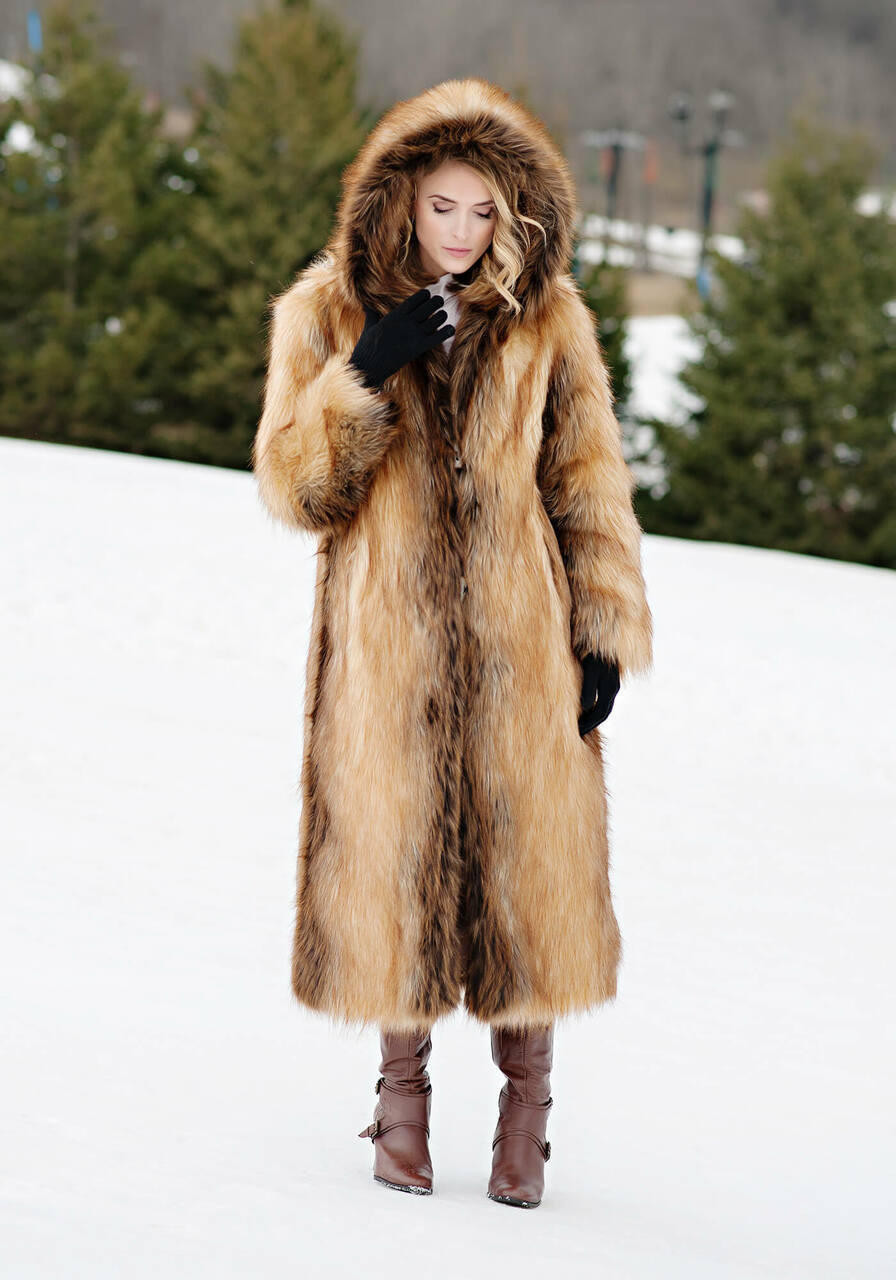Consumer Behavior Perspective: How Fur Coat symbolisation is Used to Influence Consumer sensing and Purchase Decisions
In the world of advertising and marketing, fur surface symbolisation is strategically exploited to influence undefined perception and drive buy out decisions. From a undefined behavior perspective, exploring the use of pelt coat symbolisation reveals the psychological and feeling impact it has on consumers.
Position and Prestige: rain cats and dogs coats have hanker been joint with luxury, wealth, and status. Advertisers often capitalise on this symbolism to create aspirational associations and work consumers comprehend pelt coats as a symbol of richness and exclusivity. By showcasing fur coats in glamorous settings and on prestigious figures, marketers aim to make desire and elevate the perceived prestigiousness of the product.
Sensorial Appeal: Fur coats evoke a sense of opulence and indulgence, likable to consumers’ want for tactual and sensorial experiences. Advertisers foreground the softness, warmth, and luxurious texture of pelt to tempt consumers with the foretell of a sensory indulgence. By accenting the sensory invoke of fur coats, marketers aim to create an emotional undefinable and trigger want inside consumers.
Branding Perspective: Fur Coat Symbolism in publicizing Campaigns to Convey opulence and Exclusivity
In branding strategies, stream coat symbolism is strategically employed to convey a sense of luxury, exclusivity, and mar identity. From a branding perspective, exploring how pelt surface symbolisation is used in publicizing campaigns sheds dismount on the strategic choices made by brands to position themselves in the market.
High-End Fashion Brands: umteen high-end fashion brands use pelt coats in their advertising campaigns to pass on their luxury positioning. By featuring pelt coats prominently in their visuals, these brands aim to convey a feel of exclusivity and craftsmanship. The use of pour coat symbolism helps these brands specialise themselves and point confluent consumers who value sumptuousness and prestige.
Luxury living style Brands: Beyond the forge industry, luxury life style brands also employ fur surface symbolisation to align their products with a high-end lifestyle. By featuring pelt coats in their publicizing campaigns, these brands wiretap into the aspirational desires of consumers, associating their products with a epicurean and indulgent room of life. Fur come up symbolisation becomes a powerful joyride in creating stigmatise allure and fostering brand loyalty.
Cultural Perspective: The Portrayal of Fur Coats in merchandising Campaigns Targeted at Different Cultures
Marketing campaigns targeted at different cultures must look at taste perspectives on pelt surface symbolism. The portrait of fur coats in these campaigns reflects understanding values, traditions, and attitudes towards fur. Exploring fur surface symbolism from a cultural position uncovers the nuanced approaches brands submit to resonate with diverse audiences.
1. western sandwich Cultures: In umteen Western cultures, thither is a maturement averting to pelt undefined to concerns nigh brute welfare and ethical considerations. Brands targeting western sandwich audiences may choose to minimize or avoid fur surface symbolism in their marketing campaigns, centerin instead on alternative materials or emphasizing other aspects of their products. This go about aligns with the taste transfer towards sustainability and cruelty-free fashion.
2. Eastern Cultures: In roughly Eastern cultures, pelt coats continue to have warm up perceptiveness and historical significance. Brands targeting these markets Crataegus laevigata squeeze pour coat symbolisation more conspicuously in their advertising campaigns, acknowledging the cultural value settled on fur and its undefined with tradition, luxury, and status. By respecting cultural nuances and preferences, these brands can in set up wage with their poin audience.
3. Global Consciousness: With the rise of global consciousness and sentience of social and situation issues, brands are increasingly adopting more ethical and sustainable practices. Marketing campaigns Crataegus laevigata play up choice fur options, such as faux fur or recycled fur, sympathetic to diverse taste audiences while addressing concerns about quicken being welfare. By understanding appreciation perspectives, brands put up voyage the nuanced landscape painting of fur surface symbolisation and shoehorn their messaging accordingly.
Historical Perspective: The organic evolution of Fur Coat publicizing and Its Impact on undefined Attitudes
Fur coat advertising has a rich describe that has influenced consumer attitudes towards pelt over time. Exploring the organic evolution of pelt coat publicizing from a historical view reveals the interplay between ever-changing mixer norms, fashion trends, and consumer perceptions.
1. Early Advertising: In the early 20th century, fur surface advertising a great deal convergent on the usefulness aspects of fur, accenting its warmth and practicality. Advertisements targeted primarily at women emphasised the strength and practicality of pelt coats for ordinary wear, highlighting their ability to withstand harsh endure conditions. These early advertisements aimed to position pelt coats as essential winter garments rather than sumptuousness fashion items.
2. Mid-Century Glamour: In the mid-20th century, pelt surface advertising shifted towards emphasizing witch and luxury. Advertisements featured elegant models curtained in fur, evoking a sense of mundanity and opulence. This era saw the mount of envision campaigns that joint pelt coats with celebrity and high society, refueling consumer desires to own rain buckets as a symbolization of status and prestige.
